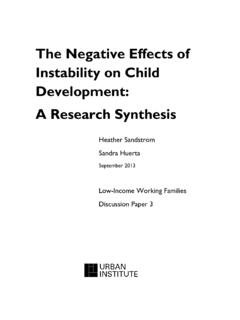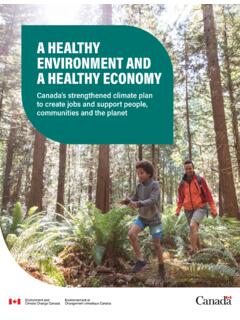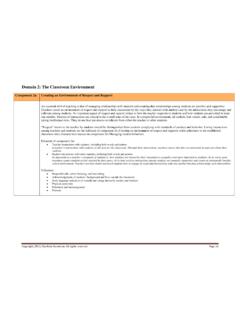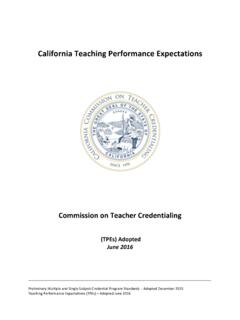Transcription of Obesity and the environment: regulating the growth of …
1 healthy people, healthy places briefingObesity and the environment : regulating the growth of fast food outlets March 2014 Obesity and the environment : regulating the growth of fast food outlets2 About PHEP ublic Health England s mission is to protect and improve the nation s health and to address inequalities through working with national and local government, the NHS, industry and the voluntary and community sector. PHE is an operationally autonomous executive agency of the Department of Health. Crown copyright 2013 You may re-use this information (excluding logos) free of charge in any format or medium, under the terms of the Open Government Licence To view this licence, visit OGL or email Where we have identified any third party copyright information you will need to obtain permission from the copyright holders concerned.
2 About this briefingThis briefing has been written in conjunction with the Local Government Association (LGA) and the Chartered Institute of Environmental Health (CIEH). It is aimed at those who work in or represent local authorities. It addresses the opportunities to limit the number of fast food takeaways (primarily hot food takeaways, especially near schools) and ways in which fast food offers can be made healthier. It summarises the importance of action on Obesity and a specific focus on fast food takeaways, and outlines the regulatory and other approaches that can be taken at local level. This briefing was written for PHE by Dr Nick Cavill and Professor Harry Rutter. We would like to thank all those on our advisory group who commented on the drafts of this briefing, with special thanks to Angela Hands, public health practitioner, planning and transport, Coventry City Council and Andrew Ross, writer and editor, Final Draft Consulting for their additional expert would welcome your views on this briefing and how we might develop or improve these in future.
3 If you have ideas for future topics, let us know. Enquiries to 1. The importance of action on Obesity 32. The role of the environment 33. Planning and health: the policy context 34. Evidence for action on Obesity 45. What tools are available? 56. Ideas for action 8 Additional resources 10 References 11 Revisions, March 2014: page 6, reference to National Planning Practice Guidance; page 7, rewording about health considerations in planning appeals. Original version published November 2013 Obesity and the environment : regulating the growth of fast food outlets3 1. The importance of action on obesityIn 2011 the government published healthy lives, healthy people: a call to action on Obesity in England ,1 which described the scale of the Obesity epidemic and set out plans for action across England.
4 * Obesity impacts on health in many ways. It is a cause of chronic disease leading to early death. It increases the risk of type 2 diabetes (fivefold in men and twelvefold in women), raised blood pressure (two and four times respectively) and colorectal cancer (three and two times respectively).2 Two-thirds of English adults, one fifth of children in reception (four to five years old), and a third in year 6 (ten to 11 years) are obese or ,3 Obesity tends to track into adulthood, so obese children are more likely to become obese There are stark inequalities in Obesity rates between different socioeconomic groups: among children in reception and year 6, the prevalence of Obesity in the 10% most deprived groups is approximately double that in the 10% least deprived.
5 2. The role of the environmentThe 2007 UK government Foresight report Tackling obesities: future choices 4 remains the most comprehensive investigation into Obesity and its causes. It described * In adults, Obesity is commonly defined as a body mass index (BMI) of 30 or more. BMI is weight (in KG) divided by the square of height (in metres). For children in the UK, the British 1990 growth reference charts are used to define weight status. See for details the complex relations between the social, economic and physical environments and individual factors that underlie the development of is a complex problem that requires action from individuals and society across multiple sectors. One important action is to modify the environment so that it does not promote sedentary behaviour or provide easy access to energy-dense The aim is to help make the healthy choice the easy choice via environmental change and action at population and individual levels.
6 This provides the opportunity to build the partnerships that are important for creating healthier places, and around which local leaders and communities can Local authorities have a range of legislative and policy levers at their disposal, alongside wider influences on healthy lifestyles, that can help to create places where people are supported to maintain a healthy weight. Public health professionals should work with their colleagues across local authorities to use these and other approaches to maximise health benefits. 3. Planning and health: the policy context Planning authorities can influence the built environment to improve health and reduce the extent to which it promotes ,8 The government s public health strategy healthy lives, healthy people , explicitly recognises that health considerations are Obesity and the environment : regulating the growth of fast food outletsObesity and the environment .
7 regulating the growth of fast food outlets4 an important part of planning policy ,1 and the Department of the environment 2011 white paper made many explicit connections between planning and One of the ten recommendations of the Academy of Medical Royal Colleges 2013 report on Obesity was that Public Health England should, in its first 18 months of operation, undertake an audit of local authority licensing and catering arrangements with the intention of developing formal recommendations on reducing the proximity of fast food outlets to schools, colleges, leisure centres and other places where children gather .10 It also recommended that local authority planning decisions should be subject to a health impact Evidence for action on Obesity The typical adult diet exceeds recommended dietary levels of sugar and fat.
8 Less than a third of adults currently meet the five a day target and around one in five children aged five to 15 meets the target, with the average being just three portions a healthy eating is associated with a reduced risk of being overweight or Obesity and of chronic diseases, including type 2 diabetes, hypertension, and certain of the dietary trends in recent years has been an increase in the proportion of food eaten outside the home, which is more likely to be high in Of particular concern are hot food takeaways, which tend to sell food that is high in fat and salt, and low in fibre, fruit and Research into the link between food availability and Obesity is still relatively undeveloped14 although a US study has found evidence of elevated levels of Obesity in communities with high concentrations of fast food s Obesity knowledge and information team (formerly the National Obesity Observatory) has produced a briefing paper on fast food outlets, together with downloadable data on fast food outlets by local authority.
9 This shows the density of outlets varies between 15 and 172 per 100,000 population (see below).This data shows a strong association between deprivation and the density of fast food outlets, with more deprived areas having a higher proportion of fast food outlets per head of population than foodChildren who eat school meals tend to consume a healthier diet than those who eat packed lunches or takeaway While there have been many initiatives to improve standards of school meals, including nutrient-based standards and the School Food Plan, these currently only affect around four in ten children who take school ,18,19 Uptake of school meals decreases when children move from primary to secondary school ( compared to ), and in many Obesity and the environment .
10 regulating the growth of fast food outlets5 cases secondary school pupils are allowed to leave the school premises at lunchtime. Improving the quality of the food environment around schools has the potential to influence children s food-purchasing habits, potentially influencing their future However, it is important to note that taking action on hot food takeaways is only part of the solution, as it does not address sweets and other high-calorie food that children can buy in shops near schools. Action on the food environment is supported by the NICE public health guidance, Prevention of Cardiovascular Disease .20 NICE recommends encouraging planning authorities to restrict planning permission for takeaways and other food retail outlets in specific areas (for example, within walking distance of schools).


















